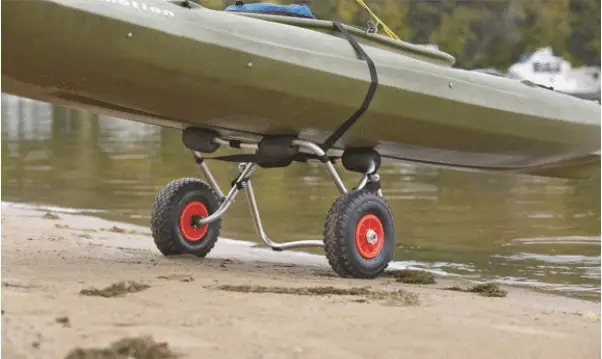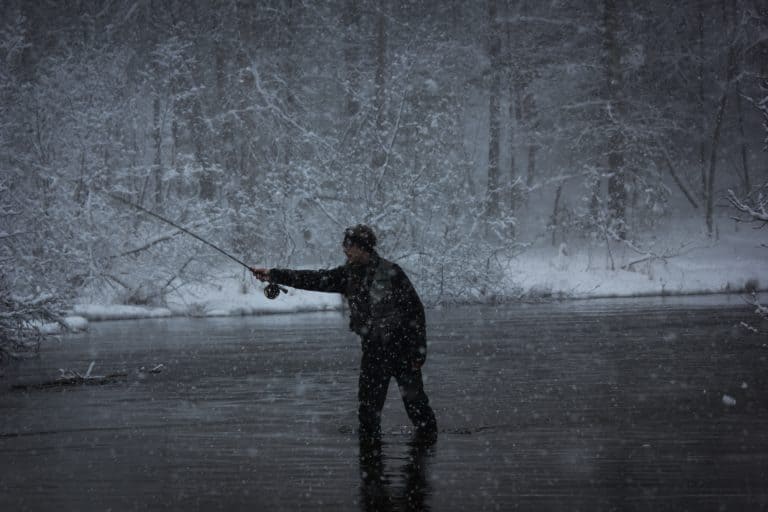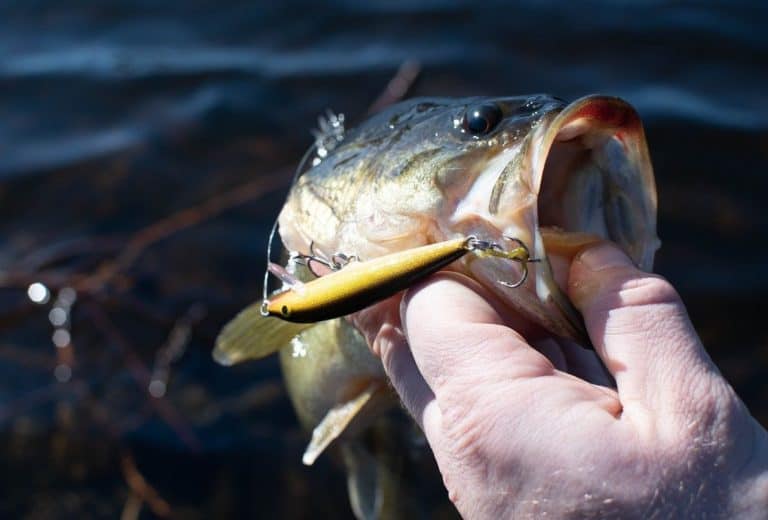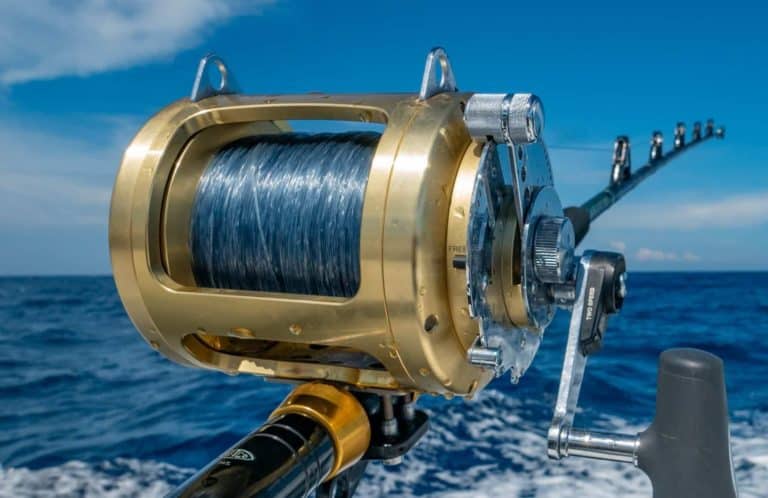How Does Rain Gear Work? – Everything There Is To Know
Everyone gets wet from time to time. If you’re not particularly outdoorsy you can mostly avoid it.
But anyone who likes a real adventure will know that it’s not about avoiding the rain but rather trying to deal with it by getting suitable waterproofs. This is why it’s crucial to understand how does rain gear work.
This includes anyone who hikes, walks dogs, spends time fishing, or basically anything outdoors.
It’s also not all jackets: finding a good waterproof hat is great for anyone who doesn’t like hoods, and fishermen will often wear waterproof pants and waders.
The best waterproof gear will keep your body warm and dry: it should be breathable, so you’re not covered in your own sweat and it should keep any outside water away from you as well.
Feeling swampy is, to be blunt, gross. So, finding the right stuff is imperative, and understanding how it works and how to care for it is just as important.
Common Terminology
Let’s start with some important terminology. These acronyms and initialisms will crop up when you’re shopping for rain gear and it’s good to have some idea of what they’re talking about so you can get the right kit:
WPB = Waterproof Breathable. This keeps the outside moisture (rain) off your body and allows the inside moisture (rain) to leave so you don’t feel it too intensely.
DWR = Durable Water Repellent. This is a top layer applied to rainproof gear to make it long-lasting and waterproof
How Does Rain Gear Work?
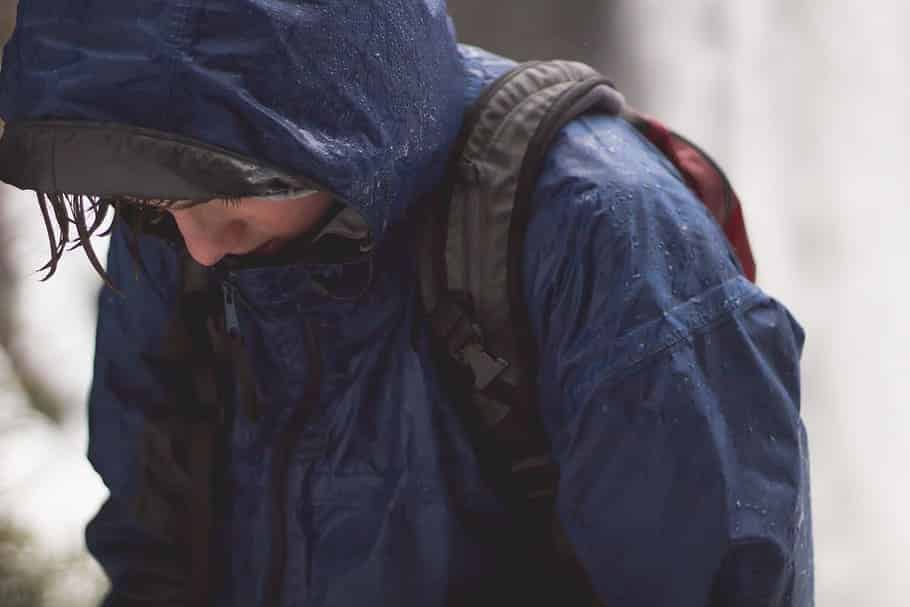
Moving on: how does rain gear actually work? For this instance we’ll focus specifically on coats, but the principles are applicable to other garments as well.
Laminates
Firstly, we have laminates. Laminates are a membrane that bonds to the inside of the shell of the coat, but above the padding material.
So, starting at the outside you have the coat’s shell, then the laminate, and finally the padding that keeps the coat warm. Laminates are really durable and can be used on clothing for extreme environments.
There are also coatings. Coatings go in the same place, but they tend to be thinner, lighter, more affordable, and less durable. If you’re willing to go outside in light rain, these will do you nicely, but if you’re off to the arctic you’ll need something with laminates.
Both laminates and coatings are actually quite thin and fragile, so coats have additional layers to protect them (and you!) as well as keep the coat warm and add colors, pockets, and other things.
Laminates and coatings are usually done in one of three ways. They are either 2-layer, 3-layer or 2.5 layer. Here is how that all works:
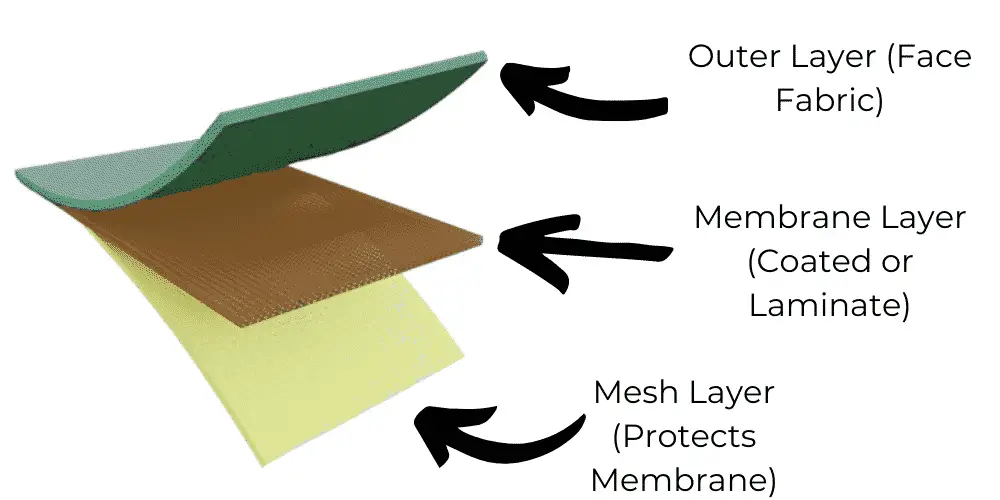
A 2-layer jacket is usually cheaper and for lighter, more casual use. The coating or laminate will sit under the outer fabric and there will be a second layer of coating or laminate hanging on the inside of the jacket to protect the inner membrane
A 3-layer jacket is more sturdy and meant for more serious, heavy duty use – but they won’t necessarily be thick.
They tend to work best and the price usually reflects this. The three layers are found on the inside of the jacket’s outer shell, and on either side of an additional fabric layer.
It may seem strange, but this actually makes the jackets lighter than a 2-layer jacket because they don’t have the weight of a hanging liner made of coating or laminate.
Finally, there are 2.5 layer jackets. These are a affordable option and have a layer of coating or laminate underneath the shell (like the other two options) and then another, thinner layer of the same coating or laminate on top of that.
This means that no inner padding or fabric is required, so the jacket can be ultra-light. This method does make the jacket less breathable and therefore might not be suitable for anyone doing exercise that might make them sweaty.
You should be aware that some jackets will not have the layers clearly labelled in their descriptions, but it’s still worth being aware of and if you shop on Amazon you can ask the suppliers for more information.
Breathable Jackets
Now, let’s move on to breathable jackets. 2 and 3 layer jackets will be the best for breathability, but what does it actually mean?
Well, essentially it’s how to avoid feeling stuffy, sweaty and uncomfortable whilst wearing something that’s designed to stop water from going through it. Most people sweat a little bit every day.
‘Normal’ cotton clothes and antiperspirants allow this to be manageable, but in a waterproof jacket (or other clothing) this can become trapped and uncomfortable.
Breathable jackets allow the perspiration to evaporate without being too much of an issue.
Sweat droplets are several thousand times smaller than raindrops, so tiny holes in breathable materials allow them to evaporate away without letting the rain get through.
The holes also allow body heat to escape, which prevents the wearer from getting uncomfortably warm. These combine to keep the wearer at a comfortable temperature and not wet from rain or sweat.
Some jackets will have zips under the arms to allow the wearer to create a gap in that part of the jacket so the sweat can leave quicker.
These can be zipped back up again, but this is an area that’s unlikely to be affected by rain as it’s covered by the upper arm/shoulder part of the jacket.
Now, as we’ve discussed, many waterproof garments have an outer layer or shell. This is called a durable water repellent finish, which prevents the jacket (or another item) from becoming saturated with water by covering the jacket with a layer of tiny spikes so water droplets are forced together.
Then they roll off the surface of the jacket instead of getting absorbed into it. It’s important to maintain your jacket’s DWR layer as if it becomes damaged or wears too thin the jacket won’t be waterproof any longer.
Most jackets will have the DWR and then the laminate or coating underneath which work together to keep the wearer dry and stop the jacket from absorbing water like a sponge.
If this does happen you’re likely to get cold, especially if the outside temperature isn’t warm. It’s fairly easy to maintain a DWR layer: you can get waterproofing sprays easily, and they can be targeted at the areas where the DWR has worn thin.
It’s worth paying close attention to areas where parts of the jacket rub, as this may wear the DWR down.
Make sure you get the right kind of waterproof spray for your jacket and see if there’s a recommended brand when you’re buying it.
Unlike certain industries (like sleeping bag manufacturers), there aren’t any industry standards for companies that make rain gear to use to test their products.
This means that it’s difficult to compare waterproofs if they’re made by different companies.
There also aren’t any independent test labs, so if you’re looking for reviews and comparisons your best option would probably be to listen to others who have already used the product before.
Here are some other things you should know about how rain gear is tested
Waterproof testing:
Fabrics become waterproof when they can stop water from traveling through them. Unlike other elements for rain gear, waterproofing is tested independently and results are shown by explaining how much water travels through a material.
For example, if a pound of water is put on top of fabric, it will either go through the fabric, roll off the fabric, or both.
Ideally, you want all of the water to roll off the fabric. This is called the PSI- pounds (of water) per square inch (of fabric).
However, many brands struggle to classify how much water can travel through the material before it stops being waterproof. REI Co-op classifies a PSI rating of 3 to be sufficiently waterproof.
Breathability Testing:
The technical term for this is vapor permeability, and brands often throw this around but there isn’t a clear test for breathability and so any rating will vary from brand to brand.
If you’re looking for straightforward information, try reviews that aren’t sponsored by any manufacturers.
Windproof Testing:
For many brands, ‘waterproof’ means ‘windproof’ because waterproof fabric is also windproof.
However, if you’re going to an area with high winds but low amounts of rain – like some mountain ranges, for example – you’ll need to make sure that your jacket is windproof.
The test is actually pretty similar to the test for waterproofing: air is blown at the fabric and if the fabric stops and diverts the air it’s windproof. Officially, a fabric is windproof if it doesn’t let the wind through when it’s blown at 60pmh.
Our Top Rain Gear Tips
- As discussed earlier, make sure you’ve got the right kind of waterproofing spray to keep your gear in the best possible shape.
Properly cared for equipment lasts for years and you’ll be able to get endless use out of it. However, there are faults from time to time so make sure you check warranties and keep receipts. - Take some time to look at prospective gear’s zippers. If you’re going to be wearing them in extremely cold areas, make sure that you can do them up with gloves on.
Also, look to see if there are vents along the body part and under the arms so you can lose sweat quickly without your jacket turning into a personal sauna. - Take into consideration where you’re going to be wearing your rain gear. If you’re a cyclist and likely to be on roads, make sure there are some fluorescent highlights to keep you safe.
If you’re going to travel to somewhere with hot monsoons, a light mac may well pack away small and keep you nice and dry but won’t let you overheat.
Equally, if you’re off to colder areas make sure you’ve got room for layers. Some rain gear will come with a removable fleece lining that you can wear independently, which is good for day-long hikes where you’re likely to get too warm or too cold. - Make sure that you’ve got some layers underneath your jacket, and if you’re worried about being too cold you can add a beanie under your hood.
- If you’re feeling really sweaty, remember it’s probably because you’re exerting yourself. Your rain gear should get rid of some of the moisture, but make sure you’re drinking enough and have something with electrolytes to make up for the salt and water you’re sweating out.
- Make sure you take good care of your products.
Look at any advice given by the manufacturer, and do the following: keep your jacket clean by washing it (don’t dry clean) and make sure you use a washing powder that’s designed for use on rain gear; then put the jacket through two rinse cycles to make sure it’s all washed out- unless you want your jacket to start foaming next time it rains!
Also, don’t use fabric softener or dryer sheets as these may damage the DWR. - Keep your rain gear away from fires because the flames may melt the DWR. If you do need to dry your coat, spread it out evenly in a warm, dry room.
How does rain gear work – Conclusion
Being outside in the rain isn’t for everyone, some people find it uncomfortable and would rather be inside.
But whilst you are enjoying the outdoors, whether you’re a kayaker, fisherman, or just a hiker, having the correct rain gear and understanding how does rain gear works can really make your time outside more comfortable.
We always advise people to look at rain gear as more of an investment that you are going to be using over a number of years which will keep you dry and most importantly safe!
Knowing how to look after your rain gear and maintain the DWR layer will make it last much longer and work much more effectively.
We truly hope that this article has given you some understanding of how does rain gear works and that you’ll use it to get outside more and hopefully get involved in more water sports!

